Gurkha Dashain Celebrations Through The Decades
Gurkha Dashain Celebrations Through The Decades
This October many Nepalis around the world will mark the Dashain Festival. In the Hindu faith, Dashain (or Dashera) celebrates the victory of the goddess Durga over the demon Mahishasura, symbolising the triumph of good over evil. As the majority of Gurkhas have historically been Hindus, the Dashain has been a significant regimental/unit event within the Brigade of Gurkhas. Although the contemporary Brigade is more religiously diverse, the importance of Dashain has not diminished and continues to be celebrated with a regimental kaida and tradition.
In honour of Dashain 2024, The Gurkha Museum has collated a number of images, spanning from the First World War to the present, to highlight how Gurkhas have marked this special period.
One of the core events of Dashain is Mahanawami, the day of sacrifice, where animal offerings are made to Kali, a violent aspect of Durga. In the past, Gurkhas would mark this day with the ritual beheading of buffalo bulls and billy goats. To ensure good luck, the Gurkha performing the sacrifice would try and carry it out it with a single, clean stroke. After this, he’d receive a cash gift and a white head covering called a pagari.
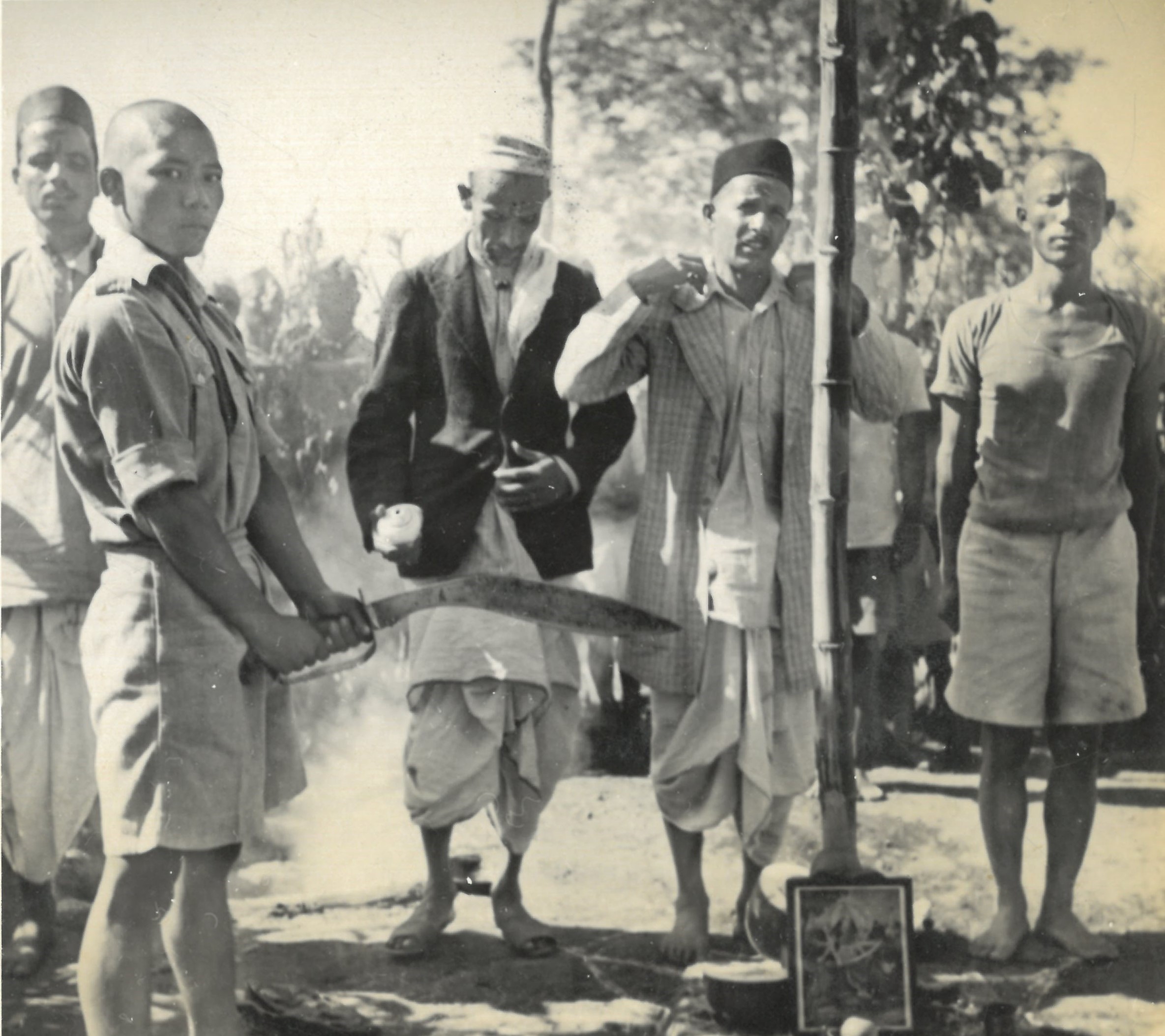
Gurkha soldier from the 3rd Gurkha Rifles posing with a heavy kukri used for animal sacrifice, c.1930s.
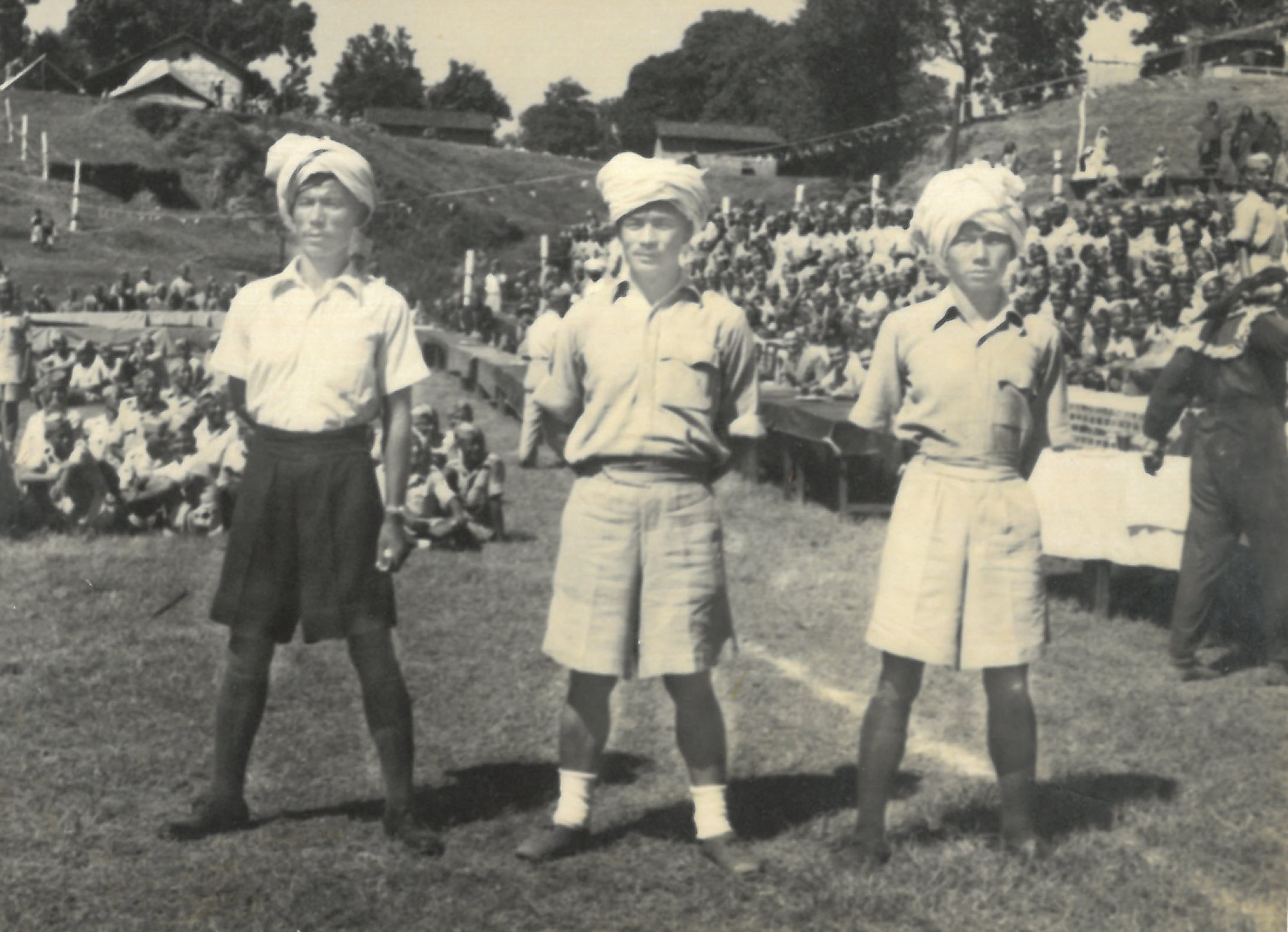
Three Gurkhas wearing pagaris, c.1930s.

A ritual altar, where the heads of the animals are gathered, from a 6GR Dashain celebration in 1946.
In more recent years, Brigade Dashain celebrations in the UK have replaced the animals with a large vegetable, such as marrows, symbolising act of sacrifice and the purification over inner evil.
As Dashain has been a historic regimental festival, Brigade Dashain celebrations have at times also included a certain amount of military flare, accompanying sacrifices with rifle volleys and a performance by the regimental band.
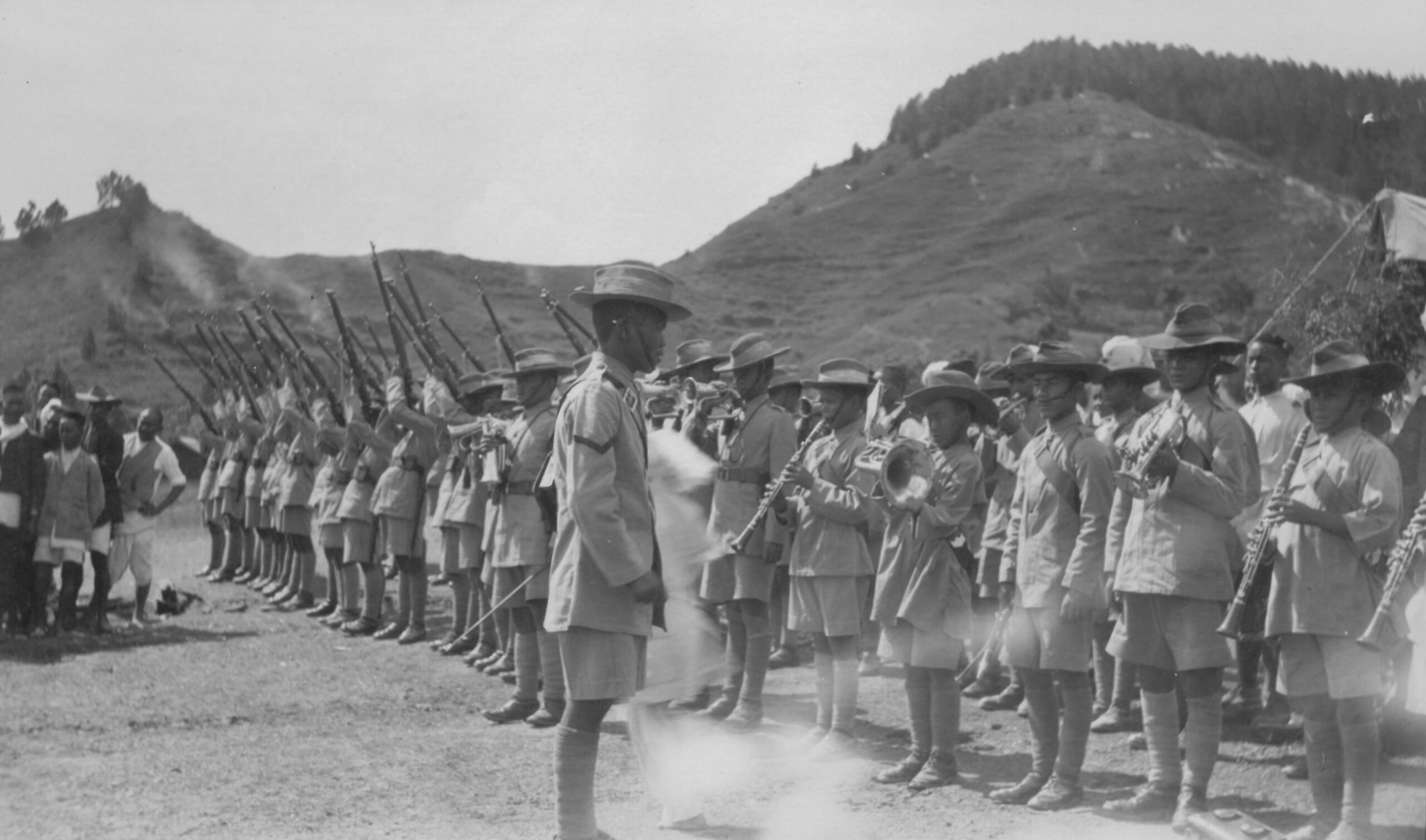
Gurkhas marking Dashain with music and rifle volleys, c.1914 – 1918.
The Museum’s archives share another insight on Dashain, that is the prominence of Maruni dancing. In wider Nepali culture this dance is often performed by women, however, within the Brigade it is performed by younger Gurkhas soldiers or subalterns, donning a headdress and elaborate garments.
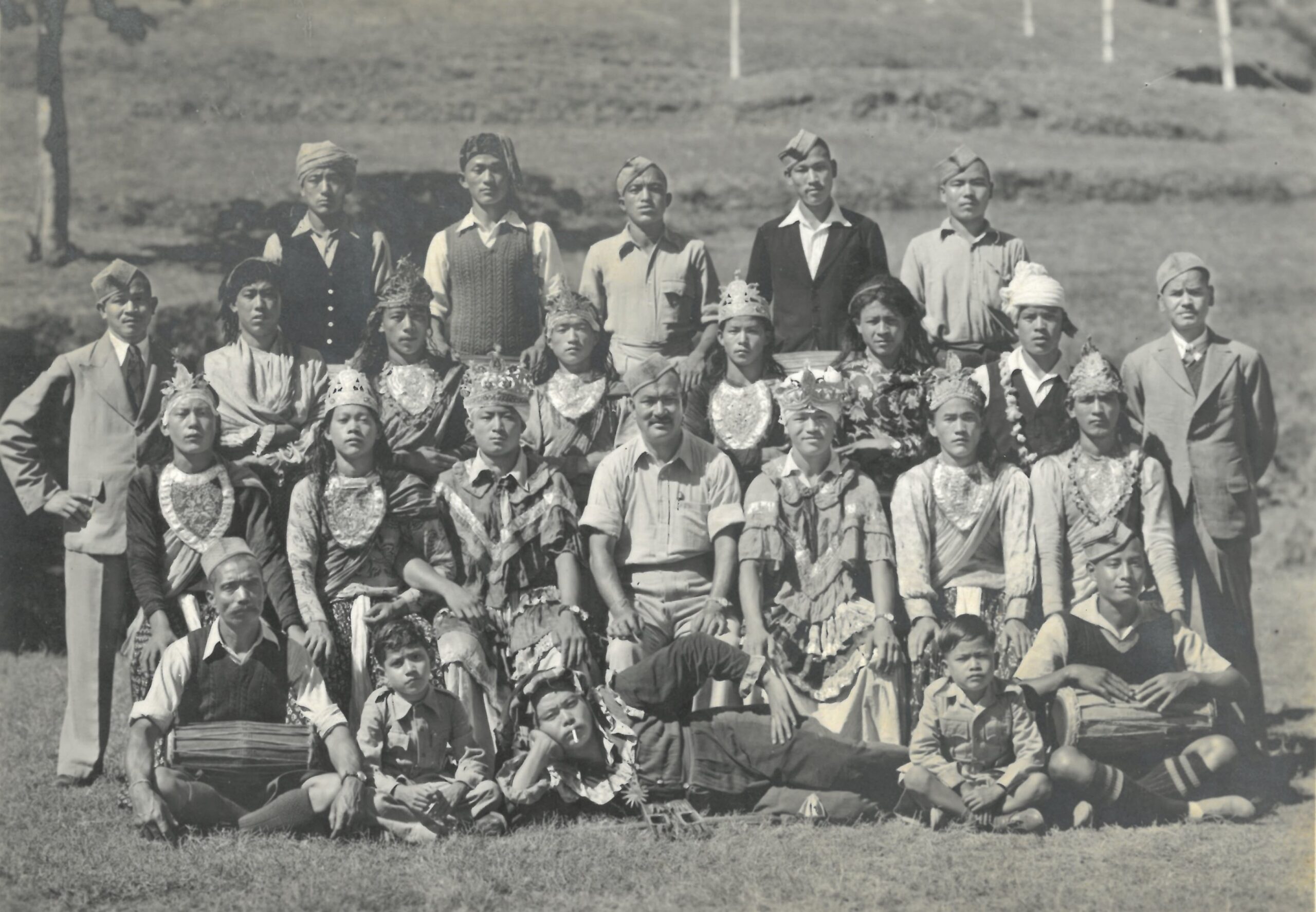
Men of 3GR in traditional Maruni dancing adornments, c.1930s.
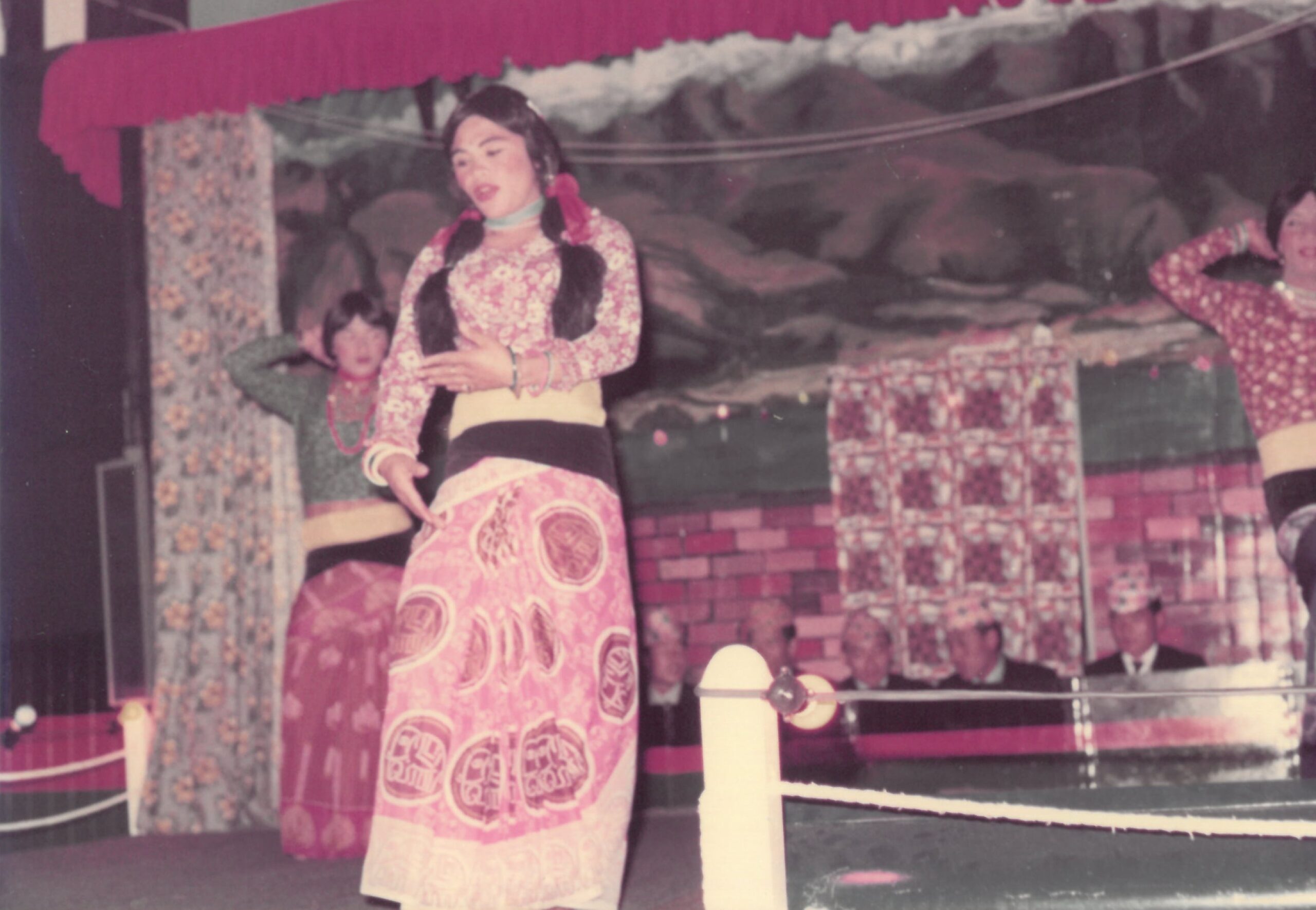
Men of 6th QEO Gurkha Rifles performing a Maruni dance, 1978.
As part of the Brigade’s kaida, Dashain is also an opportunity for officers and soldiers to relax and share the celebration together with traditional food and drink. There was an unofficial habit amongst the soldiers of trying to get their younger British officers to drink as much as possible. Patrick Davis, who was a young subaltern in 1945, recalled struggling to match drinks with Jemadar Manbahadur during his regiment’s Dashain celebration in 1945. Despite Davis’s efforts, Manbahadur watched stoically as the young lieutenant was defeated by a swig of neat rum.

Officers and men of 6GR mingling at a Dashain party, 1989.
The tenth and final day of the Gurkha Dashain is Vijaya Dashami. On this day, the Pandit (a Hindu religious figure analogous to a chaplain) and the Gurkha Major will give each person Tika, a red and white mark on the forehead. Tika has a number of symbolic meanings, including peace and family bonds. Each person will also receive a blessing for their future.
The importance of Tika, and Dashain as a whole, is emphasised by the fact that Gurkha units will mark it even whilst on operations, regardless of trying conditions. In October 1944, despite being in the midst of difficult winter fighting in Italy, the men of 1st Battalion, 5th Royal Gurkha Rifles wished to mark this festival. After some ‘negotiations’ at the headquarters of 17th Indian Infantry Brigade, a battalion of Royal Fusiliers went up to relieve their Gurkha comrades especially so they could enjoy the last few days of Dashain. More recently, Gurkhas have celebrated Dashain whilst on operation in Afghanistan.
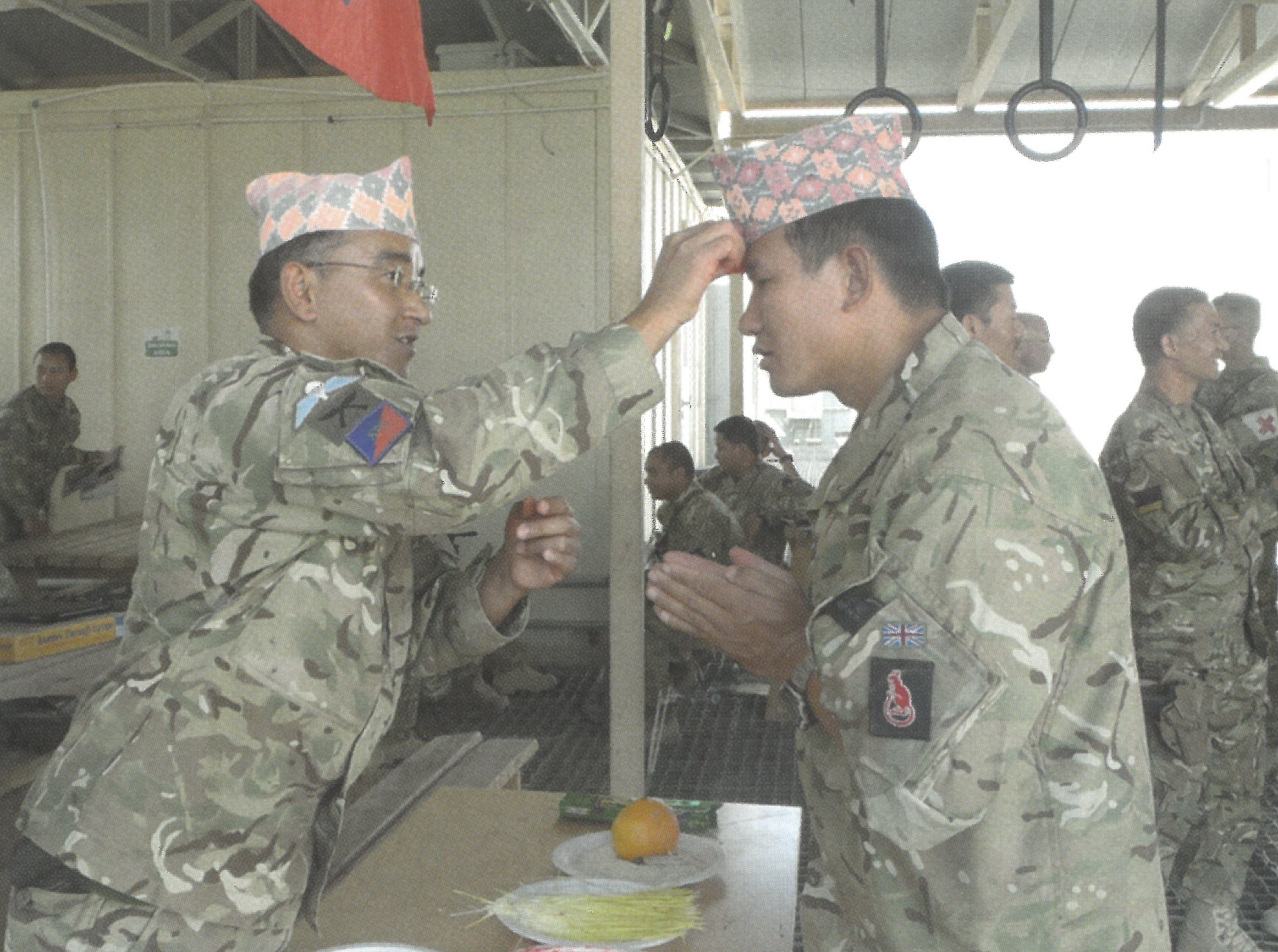
WO2 Khadak Chhetri, Gurkha Staff and Personnel Support, giving Tika at Camp Bastion, Afghanistan, October 2013.
In the nearly 210 years that Gurkhas have served with the British military, Dashain is another way they have stood out as unique amongst their British counterparts. The festival continues to be marked each year by every unit in the Brigade. To learn more about the significance of Dashain in a Gurkha soldier’s own words, below is a piece written for the Museum by Major Ramkumar Rai, Royal Gurkha Rifles.
“Dashain is the most auspicious festival in Nepal and of Hinduism. It takes place in the bright lunar fortnight of September/October every year, ending on the day of the full moon. It lasts for 15 days in Nepal, but the Brigade of Gurkhas only celebrate it for 10 days. Dashain signifies the triumph of good over evil – the victory of the Goddess Durga Devi over the wicked demons. Dashain is also a time of family reunions, the exchange of gifts and blessings, profuse pujas (worship), ritual bathing and animal sacrifices. In the Brigade of Gurkhas units, the Gurkha Major, as the most senior Gurkha, and the Religious Teacher offer Tika and blessings to all service personnel on the final day. It is akin to Christmas in importance and effect.
The first day of Dashain begins with “Ghatasthapana”, where a sacred vessel called kalash is filled with holy water and barley seeds and kept away from sunlight up to the tenth day. The seeds will have grown to form yellow shoots known as jamara. The following days involves various rituals and celebration. The seventh day of Dashain is Fulpati, an important day, involves the gathering of nine types of sacred plants and is celebrated with great enthusiasm. Day eight is the Maha Asthami; on this day, devotees visit temples to offer sacrifices and honor goddess Durga, seeking her divine blessing. The night of the day is called KalaRatri. Day nine Maha Navami is the last day of Navaratri and when ceremonies and rituals reach their peak. This day is also known as the demon hunting day. Dashain culminates on the tenth day which is known as Vijaya Dashami or Tika. It is the most important day, when tika (a mixture of rice, yogurt, colour) and jamara is received by younger family members and elders bless them for their future.
Dashain is also marked by the flying of kites, playing traditional swing, buying new clothes etc. Dashain is not just a religious festival; it’s a cultural extravaganza that unites Nepalese/Gurkhas of all backgrounds, reconnect with their roots, strengthen family bonds, promoting love, togetherness, and the victory of good over evil. In essence, Dashain serves as a reminder of the eternal battle between right and wrong and ultimate victory of light over darkness.”
The Gurkha Museum Trust is the charity responsible for protecting and promoting the Gurkhas’ history and culture.

